The International Broadcasting Convention is this week in Amsterdam, so we have a number of new product announcements which are relevant to editors and other post professionals.
First off, AJA announced their newest PCIe I/O card, the KONA-X. At the surface level, the card is a straightforward option, sitting below the existing Kona-5 but far above the T-Tap Pro, with 12G SDI and HDMI 2.0 inputs and outputs, compatible with any of the tools that already support the long standing Kona line of products. What makes the card unique is its DMA support for lowering input to output latency, for faster turnaround of AR graphics and AI driven video overlays, or virtual production backgrounds, being generated on the fly by game engines. 
 The rest of the potential legacy I/O interfaces are included on a separate card, the KONA Xpand, which adds support for REF, AES and LTC, plus RS232 and stereo analog audio. I like this idea, as many users don’t need these options which add cost to the card, but some users require them. And I would hope that the Xpand will work with other cards in the future, lowering its overall cost over time, and allowing it to be retained when the main card is updated. Priced at over $3500, this is not a budget option by any means. I would still love to see a PCIe version of the T-Tap Pro, a single 12G SDI and HDMI output, on a low profile PCIe card. I figure there must be a decent market for a card like that.
The rest of the potential legacy I/O interfaces are included on a separate card, the KONA Xpand, which adds support for REF, AES and LTC, plus RS232 and stereo analog audio. I like this idea, as many users don’t need these options which add cost to the card, but some users require them. And I would hope that the Xpand will work with other cards in the future, lowering its overall cost over time, and allowing it to be retained when the main card is updated. Priced at over $3500, this is not a budget option by any means. I would still love to see a PCIe version of the T-Tap Pro, a single 12G SDI and HDMI output, on a low profile PCIe card. I figure there must be a decent market for a card like that.
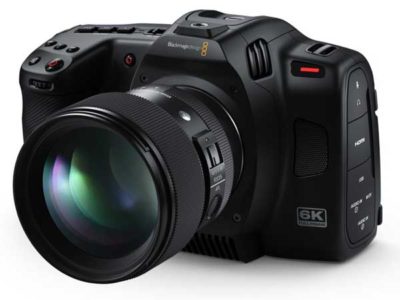 Blackmagic announced a new camera to their line of Pocket Cinema Camera 6K cameras, which has a full frame 6K sensor and an L-Mount lens, which is much larger than the Super35 senser and EF-Mount of their previous camera. It still records 12bit Blackmagic RAW files, but now to CFexpress cards or USB storage, with live H264 proxies as well if desired. It seems like a pretty solid option for entry level professional work, for $2600 plus lenses. They also released “Blackmagic Camera” which is a free iPhone app for fully utilizing the phone’s camera features with maximum user control. It has an impressive number of features, from false color and zebra display modes, to metadata controls. It can record 10-bit ProRes directly to Blackmagic Cloud so media files will be ready to edit in Resolve. I am an Android user, otherwise I would have already downloaded and tried it.
Blackmagic announced a new camera to their line of Pocket Cinema Camera 6K cameras, which has a full frame 6K sensor and an L-Mount lens, which is much larger than the Super35 senser and EF-Mount of their previous camera. It still records 12bit Blackmagic RAW files, but now to CFexpress cards or USB storage, with live H264 proxies as well if desired. It seems like a pretty solid option for entry level professional work, for $2600 plus lenses. They also released “Blackmagic Camera” which is a free iPhone app for fully utilizing the phone’s camera features with maximum user control. It has an impressive number of features, from false color and zebra display modes, to metadata controls. It can record 10-bit ProRes directly to Blackmagic Cloud so media files will be ready to edit in Resolve. I am an Android user, otherwise I would have already downloaded and tried it.
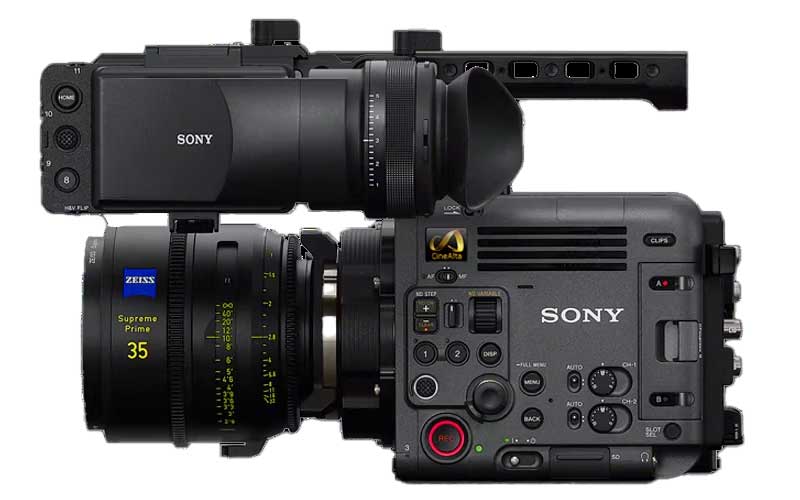 Sony also announced a new camera, the Burano, which is smaller sibling to the Venice. New cameras are usually notable to post as that is who has to the deal with the media that these camera’s record. But in this case it looks like the various supported formats (X-OCN & XAVC) are pretty similar to the existing options that have been coming from the Venice for a few years now.
Sony also announced a new camera, the Burano, which is smaller sibling to the Venice. New cameras are usually notable to post as that is who has to the deal with the media that these camera’s record. But in this case it looks like the various supported formats (X-OCN & XAVC) are pretty similar to the existing options that have been coming from the Venice for a few years now.
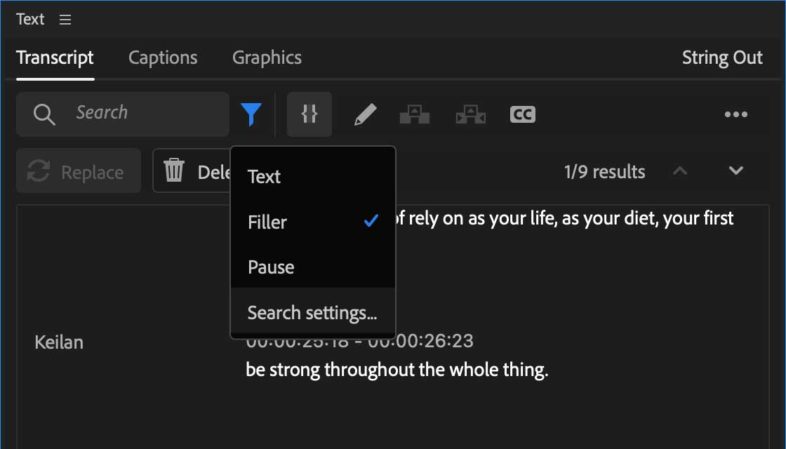 Lastly, Adobe announced a variety of new video related features coming to their Creative Cloud applications. In Premiere Pro, their text based editing has been well received, and is being extended to allow editors to easily remove pauses and filler words in recordings, to quickly clean up audio and tighten up edits. The length of what will be considered a pause is user definable, and it can ah, find and uh, automatically uh, remove extra uh, filler words in audio recordings, either leaving silence or ripple deleting the time out entirely.
Lastly, Adobe announced a variety of new video related features coming to their Creative Cloud applications. In Premiere Pro, their text based editing has been well received, and is being extended to allow editors to easily remove pauses and filler words in recordings, to quickly clean up audio and tighten up edits. The length of what will be considered a pause is user definable, and it can ah, find and uh, automatically uh, remove extra uh, filler words in audio recordings, either leaving silence or ripple deleting the time out entirely.
Premiere Pro can also clean up audio with a new AI enhanced speech tool that has been popular on Adobe Podcast as a cloud tool, but will now be available directly in the application. It resynthesize’s voices to remove background noise and increase clarity, with all processing now down on the local system. They also claim to have a solution to the long standing Quicktime gamma problem, which has resulted in inconsistent MOV output for years. And you can now batch select multiple markers to move or delete them, which is a small change, but extremely useful one in certain situations, especially with FrameIO’s implementation of them for notes.
 Speaking of FrameIO, they have new side-by-side comparison tools for not just stills, but videos as well, and the sources no longer have to be in the same versions stack.
Speaking of FrameIO, they have new side-by-side comparison tools for not just stills, but videos as well, and the sources no longer have to be in the same versions stack. 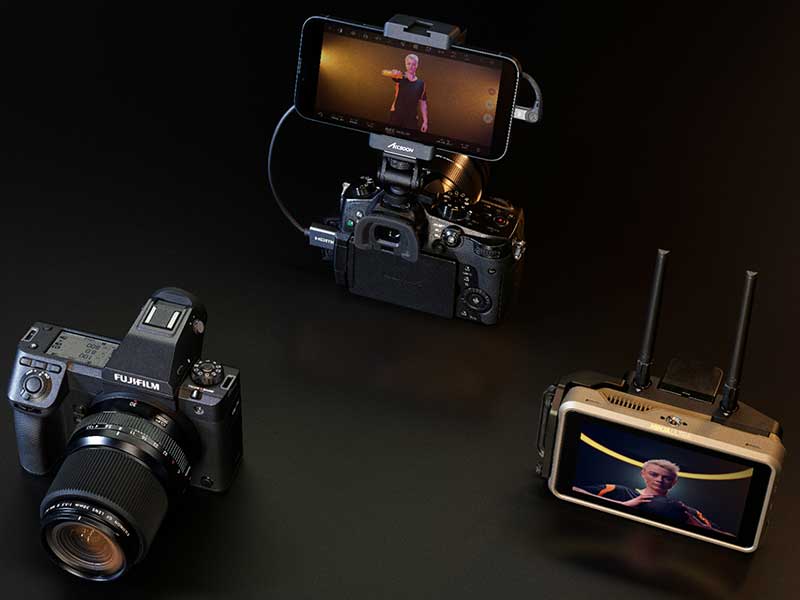 They appear to have a pretty clean and simple UI approach to make that functionality easy and intuitive to use. They will support 3rd party cloud storage for Enterprise users, which will probably alleviate certain security concerns of potential customers. And they also have new camera to cloud hardware options, including the Accsoon Seemo, which I had never heard of, but appears to be a fairly revolutionary camera attachment for output compression and streaming.
They appear to have a pretty clean and simple UI approach to make that functionality easy and intuitive to use. They will support 3rd party cloud storage for Enterprise users, which will probably alleviate certain security concerns of potential customers. And they also have new camera to cloud hardware options, including the Accsoon Seemo, which I had never heard of, but appears to be a fairly revolutionary camera attachment for output compression and streaming.
Lastly, After Effects is getting a number of new features. Their AI powered rotoscoping tool Roto Brush is getting a big upgrade, to allow it to better handle intersecting objects and other complex problems. But the thing I am most excited about is After Effect’s new support for importing 3D objects directly into the composition. This change is probably motivated in part by the development of apps like Adobe Dimension and their acquisition of the Substance 3D tools, and it initially supports OBJ and GLB files, but more formats are said to be coming.
 I am not much of a 3D guy, because I just don’t have the patience that has historically been required. My brother has been modeling stuff for animation since high school, and modeling real objects for manufacture since college, but I would prefer to skip that step. With the development of Generative-AI created 3D models, I have been looking for a way to bridge the gap between that functionality, and my work in Premiere and AE, and this appears to be what I have needed. I no longer have to setup scenes in Cinema4D to use my 3D assets in After Effects. I do a fair bit of VFX pre-visualization, usually post-viz mockups of shots in editorial, on my last couple big films. The tools are all there for keying together existing content, but when I have to add an object that will be fully synthetic, I either have to send the shot to an artist to create an overlay for me, or pull from a pre-rendered spinning video of the model. This will allow me to get a model from the VFX team, and overlay it onto the shot however the director wants.
I am not much of a 3D guy, because I just don’t have the patience that has historically been required. My brother has been modeling stuff for animation since high school, and modeling real objects for manufacture since college, but I would prefer to skip that step. With the development of Generative-AI created 3D models, I have been looking for a way to bridge the gap between that functionality, and my work in Premiere and AE, and this appears to be what I have needed. I no longer have to setup scenes in Cinema4D to use my 3D assets in After Effects. I do a fair bit of VFX pre-visualization, usually post-viz mockups of shots in editorial, on my last couple big films. The tools are all there for keying together existing content, but when I have to add an object that will be fully synthetic, I either have to send the shot to an artist to create an overlay for me, or pull from a pre-rendered spinning video of the model. This will allow me to get a model from the VFX team, and overlay it onto the shot however the director wants.
 The new support for 3D objects in After Effects is supported by a new GPU accelerated Advanced 3D engine, and it can do all sorts of advanced rendering on 3D objects, but I am primarily interested in the basics. It will allow me to import and manipulate a 3D asset in an environment that I am very familiar with, and easily composite it into a shot to preview how it will look once a real VFX artist takes the time to do it properly. This functionality is already available in the current public beta builds, and I would anticipate the full release to be at Adobe MAX next month. I have tested it on my system, and it works with the OBJ models from my last film, and would have saved me so much time on that project. So I am looking forward to putting it into use on my next movie.
The new support for 3D objects in After Effects is supported by a new GPU accelerated Advanced 3D engine, and it can do all sorts of advanced rendering on 3D objects, but I am primarily interested in the basics. It will allow me to import and manipulate a 3D asset in an environment that I am very familiar with, and easily composite it into a shot to preview how it will look once a real VFX artist takes the time to do it properly. This functionality is already available in the current public beta builds, and I would anticipate the full release to be at Adobe MAX next month. I have tested it on my system, and it works with the OBJ models from my last film, and would have saved me so much time on that project. So I am looking forward to putting it into use on my next movie.
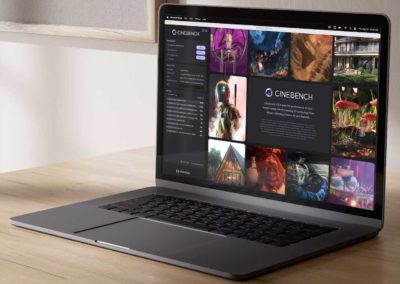 Also related to 3D, Maxon has deepened their existing partnership with Adobe (See After Effects plus Cinema4D) by packaging a one year license of Adobe’s Substance 3D tools with new subscriptions of Maxon ONE, for a limited time. Maxon ONE is their subscription service giving users access to all of their tools, many of which have been updated for IBC, as they are releasing their 2024 versions. Maxon also released Cinebench24 last week, which is the newest version of their free rendering benchmark utility. The new version has added support for GPU benchmarking now that Redshift is GPU accelerated, and I have been utilizing it for other upcoming reviews with great success.
Also related to 3D, Maxon has deepened their existing partnership with Adobe (See After Effects plus Cinema4D) by packaging a one year license of Adobe’s Substance 3D tools with new subscriptions of Maxon ONE, for a limited time. Maxon ONE is their subscription service giving users access to all of their tools, many of which have been updated for IBC, as they are releasing their 2024 versions. Maxon also released Cinebench24 last week, which is the newest version of their free rendering benchmark utility. The new version has added support for GPU benchmarking now that Redshift is GPU accelerated, and I have been utilizing it for other upcoming reviews with great success.

